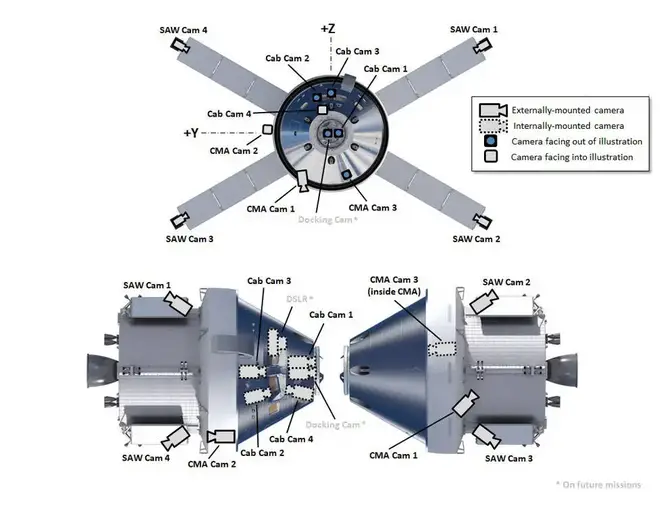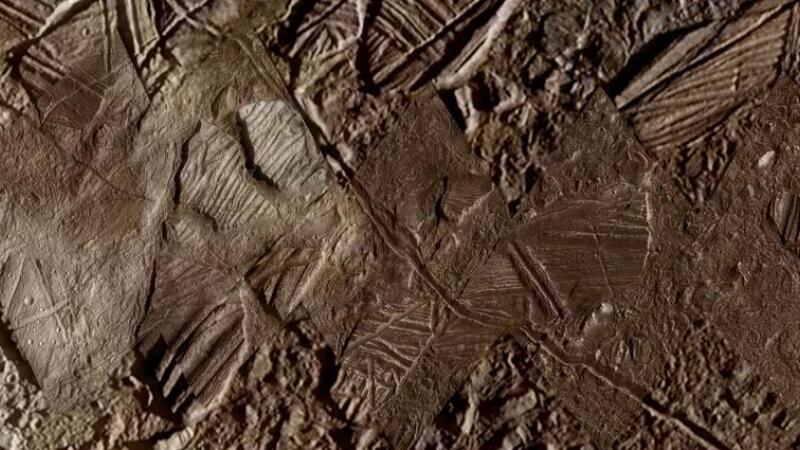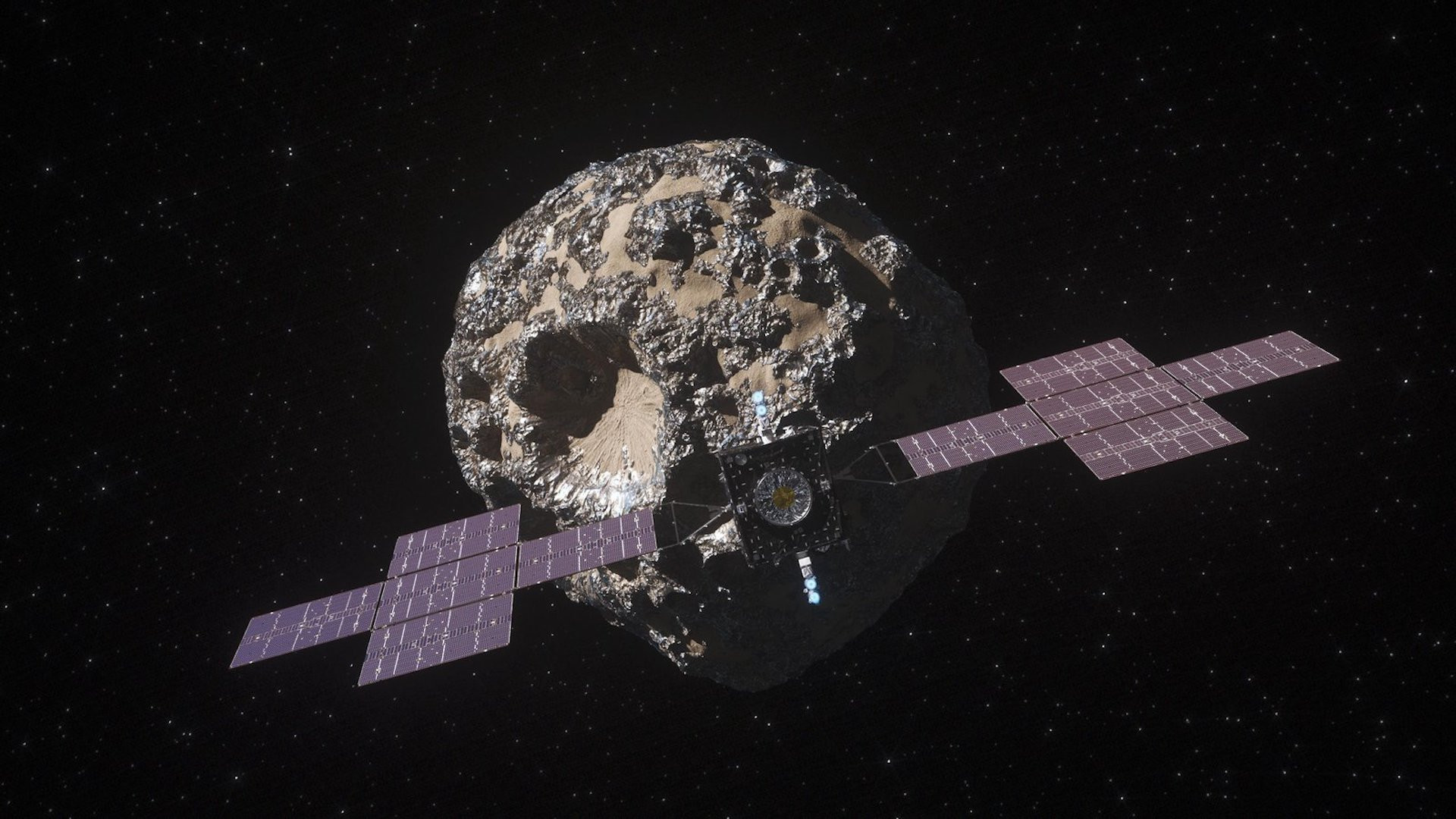ASA Artemis I mission has already begun with the launch of NASA’s Space Launch System (SLS) rocket and the Orion Spacecraft firmly stacked atop the megarocket on November 16. The American Space Agency planned to cover around 40,000 miles beyond the moon with the Orion spacecraft before returning the space probe to earth.
During the design and construction of the Artemis I spacecraft, the engineers equipped the space vehicles with sophisticated camera systems to capture and gather valuable engineering data to enable NASA to prepare for future Artemis space missions to the moon. NASA installed cameras on both the rocket and the spacecraft. Specifically, around eight cameras were installed on the SLS rocket while 16 cameras were installed on the Orion spacecraft.
These cameras were sophisticated enough to capture and document every part of the Artemis I mission event. These events include liftoff, ascent, solar array deployment, external rocket inspections, landing, and recovery. The camera systems were also meant to capture fascinating images of Earth, the moon, and the Orion Spacecraft.
Camera Installation On The Space Launch System (SLS) Rocket
The engineers installed four cameras around the engine section of the rocket. These four cameras were pointing toward the direction of the Orion spacecraft. Two additional cameras installed at the intertank on the top of the boosters were positioned to capture the booster separation, while the other two cameras installed on the launch vehicle stage adapter were positioned to capture the core stage separation.
NASA designed the eight camera systems to cycle via a preprogrammed sequence during the launch and ascent of the megarocket. The good news is that these camera systems performed exceptionally great during the launch and ascent of the SLS rocket yesterday.
Camera Installation On The Orion Spacecraft

Image Credit: NASA
Unlike the SLS rocket, the Orion spacecraft is equipped with more camera systems to capture more fascinating pictures of earth, and the moon from a distance. The engineers installed an external camera on the crew module adapter on the Orion spacecraft to show the SLS rocket ascent and offered the rocket cam view displayed for the public during the Livestream event.
The spacecraft also has another camera system providing a detailed view of the service module panel jettison and solar array wind deployment of the Orion. Additional four cameras were mounted on the spacecraft’s solar array wings on the service module to assist NASA engineers in assessing the entire health of the external part of the Orion. These four cameras were also meant to capture a selfie view of the spacecraft with Earth or the moon in its background.
“Each of Orion’s four solar array wings has a commercial off-the-shelf camera mounted at the tip that has been highly modified for use in space, providing a view of the spacecraft exterior,” said David Melendrez, imagery integration lead for the Orion Program at NASA’s Johnson Space Center in Houston.
The solar arrays can adjust their position to be in relative to the rest of the spacecraft. The adjustment of these arrays will enable the spacecraft to optimize the collection of sunlight converted into electricity to energize the Orion. The adjustment will likely enable flight controllers in the Mission Control Center at NASA Johnson to move the cameras at different parts of the spacecraft to inspect and document its surroundings, including the Earth and Moon.
NASA engineers installed a specialized camera on the crew module adapter which served for optical navigation and pinpointing Orion’s exact location in deep space. This specialized camera will help in capturing the moon when Orion makes its closest approach to the moon’s surface. Another camera system is mounted to the crew module adapter pointing inward. This camera is installed to capture Orion’s heat shield after the crew module parts ways from the service module before making a re-entry trip into the Earth’s atmosphere.
The Orion spacecraft also has three additional wireless cameras in its inside. These wireless cameras are mounted to capture the perspectives the crew will have on them during future Artemis missions. One of these interior cameras focuses on the front pilot window, while the second camera watches over the shoulder of the commander seat, to a point where the instrument panel will be installed on future Artemis missions.
The third camera focuses on the top hatch window to capture views of the launch abort system jettison during ascent and parachute deployment during splash down and recovery. The Orion spacecraft also has two additional high-speed cameras focused on recording parachute operations. NASA technicians will probably down and process images captured by these external high-speed cameras after the flight.
“A lot of folks have an impression of Earthrise based on the classic Apollo 8 shot,” Melendrez said. “Images captured during the mission will be different than what humanity saw during Apollo missions, but capturing milestone events such as Earthrise, Orion’s farthest distance from Earth, and a lunar flyby will be a high priority.”
These 24 highly sophisticated cameras mounted on the SLS rocket and Orion spacecraft will capture numerous images and videos in different formats. NASA technicians will collect the image data provided by the Orion spacecraft and process them before releasing them.
Orion also carried cameras that are part of a technology demonstration, named Callisto. The Callisto payload consists of three in-cabin cameras and they will be used to test video conferencing capabilities. The outcome of Callisto may enhance the public’s ability to imagine themselves inside Orion in future Artemis missions.
The Orion spacecraft has already captured a fascinating image of Earth using one of its sophisticated camera systems. We should be expecting more fascinating images of the moon in the coming days.

A view of Earth as seen from the Artemis 1 Orion capsule more than 9 hours into space flight on Nov. 16, 2022. (Image credit: NASA TV)
Conclusion
NASA plans to land the first woman and first person of color on the Moon through its Artemis space program. The American space agency is also looking at establishing a long-term presence on the moon starting with its Artemis missions. After the moon, NASA may likely attempt to reach Mars and beyond in the coming years. What do you think about the camera systems of the Artemis I space vehicles?





